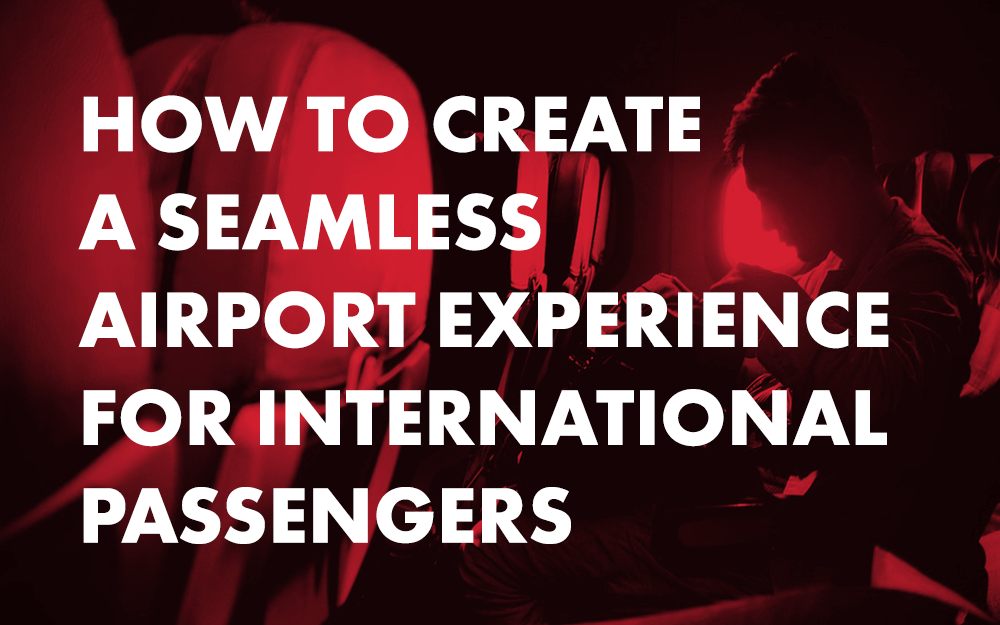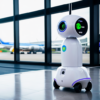
Meeting the rising expectations of passengers has been a hot topic on the BizTweet blog—and in the aeronautical industry as a whole—in recent months.
In this blog we are looking at a specific group of passengers, who have unique needs and expectations when moving through airports. That group is international passengers.
International travel is stressful. Passengers get worried about bags being lost, passing customs checkpoints and making onward flights on time. There are so many chances for things to go wrong in international air travel that what passengers want more than anything is for their journey to go smoothly.
They want to arrive on time, well nourished, well rested and stress-free. To help them achieve this, airports should aim to offer a “seamless” experience. In this blog we’re taking a look at some of the ways airports are making this happen, and how your airport can do the same.
What does a seamless passenger experience mean?
A seamless travel experience for passengers, is one which lacks disruption[i]. They want to travel from point A to point B (possibly via point C or D) without trouble or stress.
One of the major issues airports face when delivering this is that each passenger wants and needs something totally different from the next.
For example, an international passenger who has arrived off a long-haul flight may want somewhere they can grab a bite to eat, relax and recuperate. They need to recharge and get ready for the next stage of their journey. A local passenger on the other hand, may simply want to head straight for their flight without any refreshments.
Likewise, a passenger that is taking a single leg journey will have different needs from a passenger that is in the middle of a multiple-flight trip. In order to provide a seamless experience for all groups of passengers, airports need to consider each passenger individually and set up systems for each.
This is no easy feat, but thanks to technology it is becoming increasingly possible for airports to provide a more tailored, seamless experience for everyone moving through their airport.

Understanding the challenges international passengers face
International passengers are harder to cater to than local passengers. In order to ensure they have a smooth experience, airports need to understand the challenges they face. These include:
- Language barriers
- Customer service
- Navigating around the airport
Using mobile technology to overcome the language barrier
The language barrier creates many issues for international passengers. It’s possible to put up signs in the world’s major languages. But it’s not always possible to put them on every sign and it’s totally impossible to cover all languages. So what to do?
A report carried out by SITA, revealed that 83% of passengers carry a smartphone with them[ii]. The best way to connect with passengers is via their mobile devices.
Physical signs are incredibly limited in space available to display text. Mobile apps are not, because you can choose what to display, and change it at the click of a button. Mobile communication technology can be used to communicate with passengers in the language and platform of their choice. BizTweet’s WeChat integration is a good example of this.
Using WeChat, Chinese speaking passengers can receive real-time flight notifications, along with personalised offers which can be used within the airport, all in Chinese and within an app they use daily at home (in Q1 2018 WeChat topped 1 billion users).
The ability to communicate in their own language, no matter where they are in the world, reduces friction and stress. This is one of the most important factors in providing a seamless experience to international passengers.
![]()
How beacons help customer service and airport navigation
Many leading international airports have adopted beacons to assist customer service. They also allow foreign passengers to navigate their way through the airport with greater ease.
Beacons act by broadcasting signals at strategic points around the airport, which can be picked up on mobile devices (so long as a custom-built app has been downloaded).
The vast majority of international passengers in any airport are first time visitors. This means it’s easy to get lost. The beacons can help by broadcasting locations and way finding information to help passengers find their way easily.
Using beacons, airports can also use flight notifications, baggage collection and proximity marketing. This lightens the load on customer support staff, while also providing a superior level of support.
Miami International Airport is an example of an airport which is truly focusing on its international passenger needs. It uses a beacon-enabled app which offers passengers personalised updates, tips depending upon their location and directions. However, where it really shines out from the rest, is that it also provides navigation assistance to and from the airport—something international passengers can really struggle with.
The downside of beacon technology is the need to download a totally new app, which can provide a barrier to usage. Many people are resistant to downloading a new app for a single airport visit, preferring to stick with apps they already use daily, such as Twitter, Facebook Messenger and WeChat. That’s where BizTweet shines.
Our automated mobile messaging service takes just moments for passengers to set up and works in the messaging app of their choice. To get an idea of the benefits of installing real-time, multilingual mobile messaging in your airport, take a look at our features page.
Sources:
[i] https://www.internationalairportreview.com/article/33223/seamless-travel-pte/
[ii] https://blog.beaconstac.com/2016/03/10-airports-using-beacons-to-take-passenger-experience-to-the-next-level/




